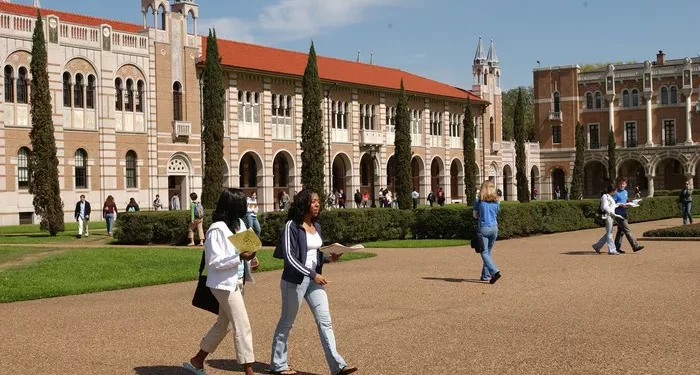When it comes to getting your US visa stamped, one option for many applicants is to complete the process in Canada. Whether you are traveling, studying, or working in the US, having your visa stamped in Canada may be a convenient choice. In this comprehensive guide, we will walk you through the process of applying for a US visa stamp in Canada, from eligibility and the application process to the interview and potential challenges you may face along the way.
1. Eligibility
Who can apply for a US visa stamp in Canada:
US visa stamping in Canada is generally available to those who are applying for nonimmigrant visas such as tourist (B-1/B-2), student (F-1), and work visas (H-1B, L-1, etc.). It is primarily aimed at individuals who are either currently residing in Canada on a valid visa or traveling through the country.
Residency requirements:
While it is possible for non-Canadians to apply for a US visa in Canada, there may be some restrictions. Typically, applicants need to be legally present in Canada with a valid immigration status, such as being a Canadian citizen, permanent resident, or holding a temporary status such as a work or study permit. Check the specific eligibility requirements at the US Embassy or Consulate where you plan to apply.
2. Application Process
Step-by-step guide:
Complete the DS-160 Form: Start by filling out the DS-160 online nonimmigrant visa application form. Ensure all information provided is accurate and matches your supporting documents.
Pay the Visa Fee: Once you have completed the DS-160 form, pay the appropriate visa application fee. The fee varies depending on the type of visa you are applying for.
Schedule Appointments: You will need to schedule two appointments: one for biometrics (fingerprinting and photograph) at an Application Support Center (ASC), and another for the visa interview at the US Embassy or Consulate.
Attend the Biometrics Appointment: Visit the ASC at your scheduled time to complete biometrics processing.
Prepare Required Documents: Gather all necessary documents, including your passport, DS-160 confirmation, fee receipt, and supporting evidence specific to your visa type.
Attend the Visa Interview: Arrive at the US Embassy or Consulate at your scheduled time for the interview. Answer questions truthfully and confidently.
Wait for Visa Processing: After the interview, your application will undergo processing. If approved, your passport with the visa stamp will be returned to you.
Specifics for Canada:
Applying for a US visa in Canada may involve additional considerations such as differences in the scheduling system, locations of consulates, and potential residency restrictions for non-Canadians.
3. Required Documents
Comprehensive list:
Passport: A valid passport with at least six months of validity remaining beyond your planned stay in the US.
DS-160 Confirmation: Proof of completing the DS-160 form.
Photograph: A recent passport-sized photo that meets US visa photo requirements.
Fee Receipt: Proof of payment for the visa application fee.
Supporting Documents: These vary by visa type but may include financial documents, employment letters, academic records, or invitation letters.
Additional documents for Canada:
Canadian Immigration Status: If you are not a Canadian citizen, you will need to provide proof of your legal status in Canada.
Travel Itinerary: Especially for tourist visas, you may be asked for your planned itinerary during your stay in the US.
4. Interview Process
What to expect:
The visa interview is a key part of the application process. During the interview, a consular officer will ask you questions about your application and your reasons for traveling to the US. Be prepared to discuss your background, employment, or academic status, depending on your visa type.
Locations in Canada:
US consulates and embassies in Canada are located in major cities, including Ottawa, Toronto, Montreal, Vancouver, and Calgary. Ensure you choose the location most convenient for you when scheduling your interview.
5. Processing Time
Estimated timeframe:
The processing time for visa applications can vary depending on the type of visa and other factors. Generally, it takes a few business days to several weeks for your application to be processed. You will receive updates on your application status via email.
Factors influencing processing time:
Visa type: Some visa types may take longer to process than others.
Workload: The current workload at the consulate or embassy can impact processing times.
Administrative processing: In some cases, additional security or administrative processing may be required, resulting in longer wait times.
6. Potential Challenges
Common issues:
Administrative processing delays: This can occur if additional security checks are needed for your application.
Insufficient documentation: Missing or incomplete documents can delay the processing of your application.
Misunderstanding questions: In the interview, providing unclear or inconsistent answers can raise concerns.
Solutions and tips:
Prepare thoroughly: Ensure all documents are in order and that you understand your application and reasons for traveling to the US.
Practice interview questions: Be prepared to discuss your background and plans in the US.
Allow extra time: Plan for the potential of longer processing times and avoid making fixed travel plans immediately after your interview.
Conclusion
By following these steps and tips, you can successfully apply for US visa stamping in Canada. Always check the latest guidelines from the US Embassy or Consulate for up-to-date information and any recent changes in the process. Good luck!




















